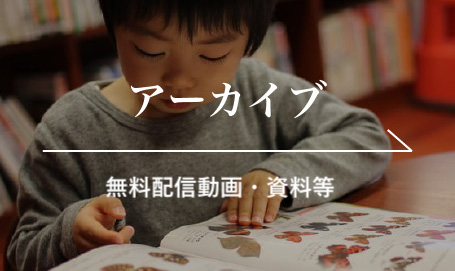< VOLUME 55, No.2>
Yumiko Sasaki, Yoshinobu Sekiguchi, Megumi Hayashi, Hiroko Okamoto Innovation of Pre-school Education and Multicultural Early Childhood Education in Germany, Nordrhein-Westfalen
Research on Early Childhood Care and Education in Japan, 2017, 55(2), 110-121.
The purpose of this study is to examine the concept of Japanese multicultural early childhood education through observing at “Kindertagessutätte” in Germany, where a large number of immigrants were accepted and where preschool education was proactively reformed. During this research, the education philosophy was examined, interviews were performed at the “Stadt Köln”, and observations and interviews were performed at five “Kindertagessutätte”. The reality of the situation was grasped through both the system and the education.
As a result, the following areas were clarified:
1. Enrichment of public aid
2. Implementation of early language learning
3. Education by foreign teachers
4. Enrichment of training programs for teachers
5. Education based on an understanding of “Bildung”
These also serve as a hint to multicultural symbiosis as well, and it is important to put them into Japanese childcare.
Keywords: multicultural early childhood education, public aid, early language learning, foreign teachers, training programs for teachers
-------------
< VOLUME 55, No.2 >
Kentaro Kawashima A Qualitative Study on the Process of Decision-Making Support for Children in Kindergarten
Research on Early Childhood Care and Education in Japan, 2017, 55(2), 122-132.
The purpose of the present study was to clarify the framework of the kindergarten teachers’ support process regarding the choices and decision making processo of children. Semi-structured interviews were conducted with kindergarten teachers (N=9). The data was analyzed qualitatively using the modified grounded theory approach (M-GTA). The analysis generated 24 concepts and 5 categories. The support process of the kindergarten teachers was as follows. In “preparing for supports,” teachers tried to understand individual characteristics of children and educated them on choice. Then teachers did a “setting choice” in an everyday choice situation. The “support for indecision” was watching children and then encouraging them to choose. The “support for refusal” was also watching children and persuading them as needed. The “supports for fixation” was leading children to make the correct choice.
Keywords: decision making support, kindergarten child, kindergarten teacher, M-GTA
-------------
< VOLUME 55, No.2 >
Akiko Yuasa Involvement of Kindergarten Teachers in Cheating Behavior Seen in Children’s Game Playing
Research on Early Childhood Care and Education in Japan, 2017, 55(2), 133-143.
The objective of the present study was to clarify how kindergarten teachers address cheating behavior during children’s game playing. Practical knowledge from ten kindergarten teachers was schematized by analyzing verbatim interview transcripts using the modified grounded theory approach (M-GTA).
The resulting model demonstrated that kindergarten teachers’ involvement passes through stages: from understanding the situation, through deciding how to get involved, and finally educational involvement. Teachers change their mode of involvement according to individual children’s awareness of rules, and treat the point in time when the child becomes aware that cheating is problematic as a teaching opportunity. Our results revealed that kindergarten teachers primarily address cheating behavior based on two modes: Authoritative involvement and cognitive conflict involvement.
Keywords: cheating behavior, game playing, kindergarten teachers’ involvement, modified grounded theory approach (M‒GTA)
-------------
< VOLUME 55, No.2 >
Miki Matsubara Why do 5-year-old-kindergarten try to intervene in others’ conflicts?:By focusing on cases where the conflict was not resolved
Research on Early Childhood Care and Education in Japan, 2017, 55(2), 144-155.
This study aims to explore why 5-year-old-kindergarten try to intervene in others’ conflicts, the discussion is based on cases where the conflict was not resolved. 5-year-old toddlers were observed.
5-year-old-toddlers found it difficult to solve conflict situations. They could solve only simple problems, but they often intervened in others’ conflicts.
Even though they couldn’t understand conflict situations, they managed to stop conflicts by sharing the information about conflict situations and exchanging opinions with one another. They tried to make the person concerned understand the correct cause of conflicts. They also tried to persuade the person concerned to stop the quarrel.
Furthermore, by intervening conflicts, they tried to make children who were quarrelling become friends and restart play stopped by conflicts. These results suggest that for 5-year-old-toddlers, struggling to solve difficult problems is more important than solving conflicts.
Keywords: interpersonal-conflict, intervention, 5-year-old-kindergarten-toddler, problem-solving
-------------
< VOLUME 55, No.2 >
Takashi Kohga, Koichi Negayama Developmental Study of Shoe-Wearing Behavior on the Terrace at Nursery School
Research on Early Childhood Care and Education in Japan, 2017, 55(2), 156-167.
This study examined how children wear shoes at the nursery school terrace. The height of the terrace is 27cm. One-year-olds squeezed their heel into shoes with their foot in the air. Some 2-year-olds wore the shoes on the terrace after dropping their shoes to the ground and retrieving them. Three-year-olds quite often squeezed their heel into the shoes placed on the terrace. Some 4-and 5-year-olds wore the shoes after dropping them to the ground and then picking them up, and some others wore the shoes directly after dropping them to the ground. In both cases their foot grounded firmly on the terrace or on the ground. The development suggests the children’s continuous effort of improvement in autonomous shoe wearing in everyday life
Keywords: the basic living habits, shoe-wearing behavior, a nursery school
-------------
< VOLUME 55, No.2 >
Mana Matsui Children’s Unexpected Interactions with the Physical Environment and the Expansion of Play in Early Childhood Settings:A 3-Year Longitudinal Study of 2-4-year-olds
Research on Early Childhood Care and Education in Japan, 2017, 55(2), 168-176.
The present study investigated children’s unexpected interactions with the physical environment in early childhood education (ECE) settings by a 3-year longitudinal observation survey of children from 2 to 4 years of age. Children often showed unexpected interactions with their environment, which were revealed to generate deviations from those originally intended, and to serve as a visual stimulant to highlight play. With the children’s imaginative mindset as a basis, those interactions also became the sources of (1) amusement, (2) expansion of play, (3) experience with objects, and (4) initiation of peer interactions. The older children get, the more likely it is that they share unexpected interactions with peers, which then expand play. With the children’s safety secured, approving their unexpected interactions was suggested to contribute in nurturing children’s play in ECE settings.
Keywords: Unexpected Interaction, Early Childhood Settings, Imagination, play, amusement
-------------
< VOLUME 55, No.2>
Shota Ogawa, Rie Harada, Jun Nakazawa An Experienced Teachers’ Approach During an Insect-Raising Activity:Focusing on the Content of Words to Children
Research on Early Childhood Care and Education in Japan, 2017, 55(2), 177-188.
The purpose of this study is to examine teacher’s high-quality approaches to children, through an experienced teacher’s approaches to children in an insect-raising activity. Study 1 examined the content of the teacher’s words during the activity through the observation of a teacher with expertise in insect-raising activities. Studies 2 and 3 examined differences in “knowledge of the butterfly”, “experience of touching insects,” “understanding of life,” and “advice to a friend who cannot touch a caterpillar” between 5-year-olds in an expert teacher’s class and those in another class. These results demonstrated that the teacher’s words about “emotional expression toward insects” and “treatment of insects” promoted children’s interactions with insects and friends. And, the teacher’s words regarding “insect knowledge” promoted acquisition of children’s insect knowledge and interest in insects.
Keywords: teacher’s words, insect-raising activity, knowledge of insects, understanding of life, epistemic curiosity
-------------
< VOLUME 55, No.2>
Makiko Hayashi, Toshiyuki Takahashi The Process of Intersubjective Understanding of Children’s Feelings and Consciousness of Caregivers’ Expertise through Group Finger Painting Experiences
Research on Early Childhood Care and Education in Japan, 2017, 55(2), 189-200.
The purpose of this study is to use group finger painting experiences as a tool foor caregivers to increase selfawareness, deepen their understanding of children, and to increase their expertise. Twelve current caregivers who had experienced group finger painting as 3rd year university students were selected as subjects. Modified grounded theory approach was used to analyze interview data collected after completion of group finger painting exercises of these test subjects. The analysis showed that, unlike when they were students, consciousness towards understanding of children’s feelings was observed. Self-reflection as a caregiver and further mention of work expertise were confirmed. In addition, the individuality in group finger painting prompted the childlike elements of caregivers and promoted the intersubjective understanding of children’s feelings, which were shown to increase awareness of caregivers’ expertise.
Keywords: group finger painting, children’s feelings, intersubjective understanding, caregivers’ expertise, modified grounded theory approach
-------------
< VOLUME 55, No.2>
Ken Oota, Ai Endo, Kouji Oishi Effects of Active Touch Activities on Children’s Body Image Drawings
Research on Early Childhood Care and Education in Japan, 2017, 55(2), 201-212.
The present study aims to examine the effects of active touch activities on children’s body image drawing. Participants included 58 children, aged 5, enrolled in kindergarten and nursery school. Participants were introduced to active touch activities such as interacting with beetles, digging for sweet potatoes, or playing with mud balls. To evaluate their body image, participants were asked to draw their state of activity before and after engaging in active touch activities. The data collected included participant’s body drawing score calculated on the basis of the Goodenough Draw-a-Person test criteria. The results indicated that the body drawing score calculated after engaging in active touch activities was significantly higher. The mechanism of body image improvement through active touch activities was also discussed.
Keywords: early childhoood, body image, draw-a-person, active touch
-------------
< VOLUME 55, No.2>
Takafumi Kagamihara Recognition and Production of Facial Expressions in Preschoolers:Recognizable Stimuli of Facial Expressions for Preschoolers and the Appropriateness of their Facial Expression from an Adult’s Viewpoint
Research on Early Childhood Care and Education in Japan, 2017, 55(2), 213-223.
This study first clarified the use of facial expressions (line drawings, illustration, adults’ pictures, and infants’ pictures) as stimuli, which made it easy for preschoolers to understand the emotion behind the facial expression. Second, it identified the extent to which adults could understand the facial expressions voluntarily produced by preschoolers. Results indicated that the preschoolers, aged 3–4, could understand the basic facial expressions regardless of the variety of the stimuli. Additionally, they could produce the facial expression of happiness, which was easily understood by an adult; however, it was difficult for them to produce the facial expressions of sadness and anger in such a manner that it could be understood by adults.
Keywords: Preschooler, Recognition of Facial Expressions, Stimulus of Facial Expressions, Voluntary Production of Facial Expressions
-------------
< VOLUME 55, No.2>
Tetsuya Nada How do Gender and Intimacy Influence Peer Interaction and a Level of Knowledge Acquisition?
Research on Early Childhood Care and Education in Japan, 2017, 55(2), 224-234.
The gender factor, in addition to the level of intimacy, was hypothesized to have an impact on the quality of interaction. This study examined how these factors influence peer interaction and a degree of individuals’ knowledge acquisition through their interaction. In the study, 5-year-old children were asked to solve a task in pairs, the way in which each child offered support to their partner during the task was analyzed. The results showed that with some gender variance, the peers with high intimacy provided misleading guidance during the task, which negatively impacted their knowledge acquisition.
Keywords: knowledge acquisition, intimacy, gender, peer
-------------









